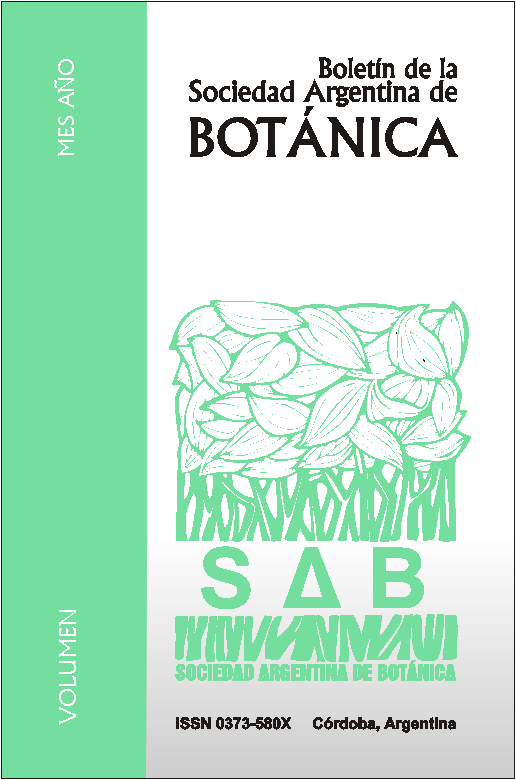Efecto del tipo de corte y de tratamientos en el mantillo para la restauración de pastizales naturales invadidos por Pinus halepensis Effect of pines removal and soil litter treatments in the restoration of natural grasslands invaded by Pinus halepensis
DOI:
https://doi.org/10.31055/1851.2372.v48.n2.6265Abstract
Summary: Effect of pines removal and soil litter treatments in the restoration of natural grasslands invaded by Pinus halepensis. Ernesto Tornquist Provincial Park (Sierra de la Ventana, Buenos Aires, Argentina) protects a remnant of pampean grasslands and is seriously threatened by the spread of alien woody plants, among them by Pinus halepensis. The effect that this species has on the structure and functioning of the ecosystem lead to the implementation of control actions aimed to reduce invasion. This work presents the results of monitoring the recovery of native grasslands after two control strategies: complete and partial removal of invasive trees, with and without complementary restoration actions (removal of needles, soil disturbance, addition of top-soil from non-invaded grasslands). Changes in vegetation following management actions were analyzed. Two years after removing the pines cleared areas showed increases in vegetation cover and species richness, with no detectable differences associated to complementary restoration actions. Percentage cover of alien plants showed a peak after felling the trees but this was later reverted by an increase in the abundance of native plants. These results highlight the capacity of spontaneous recovery of grasslands after controlling pines and the importance of early interventions in order to prevent changes that could be hard to revert.
Key words: Sierra de la Ventana, mountain grasslands, invasive alien species, control.
Resumen: El Parque Provincial Ernesto Tornquist (Sierra de la Ventana, Buenos Aires, Argentina) constituye uno de los escasos relictos de pastizal pampeano y resulta amenazado por el avance de plantas leñosas exóticas, entre ellas Pinus halepensis. El impacto de esta especie sobre la estructura y función del ecosistema determinó el inicio de acciones de control para restaurar el área invadida. Este trabajo aborda la recuperación del pastizal luego de aplicar el corte de pinos con dos intensidades: tala completa y raleo; con y sin aplicación de acciones complementarias de restauración (remoción de acículas, disturbio superficial de suelo, agregado de suelo), correspondiendo a un diseño en bloques con parcelas divididas. Se analizaron los cambios en la vegetación tras las intervenciones de corte. Dos años después, las parcelas exhibieron aumentos en la cobertura de la vegetación y la riqueza específica, sin variaciones asociadas a los tratamientos complementarios de restauración. La cobertura de plantas exóticas se incrementó tras el corte y se redujo posteriormente por un aumento en la abundancia de especies nativas. Los resultados obtenidos resaltan la capacidad de recuperación espontánea del pastizal pampeano serrano y la importancia de actuar en etapas tempranas del proceso de invasión para evitar cambios de difícil reversión.
Palabras clave: Sierra de la Ventana, pastizal serrano, especie exótica invasora, control.
Downloads
Issue
Section
License
Provides immediate and free OPEN ACCESS to its content under the principle of making research freely available to the public, which fosters a greater exchange of global knowledge, allowing authors to maintain their copyright without restrictions.
Material published in Bol. Soc. Argent. Bot. is distributed under a Creative Commons Attribution-NonCommercial-ShareAlike 4.0 International license.





